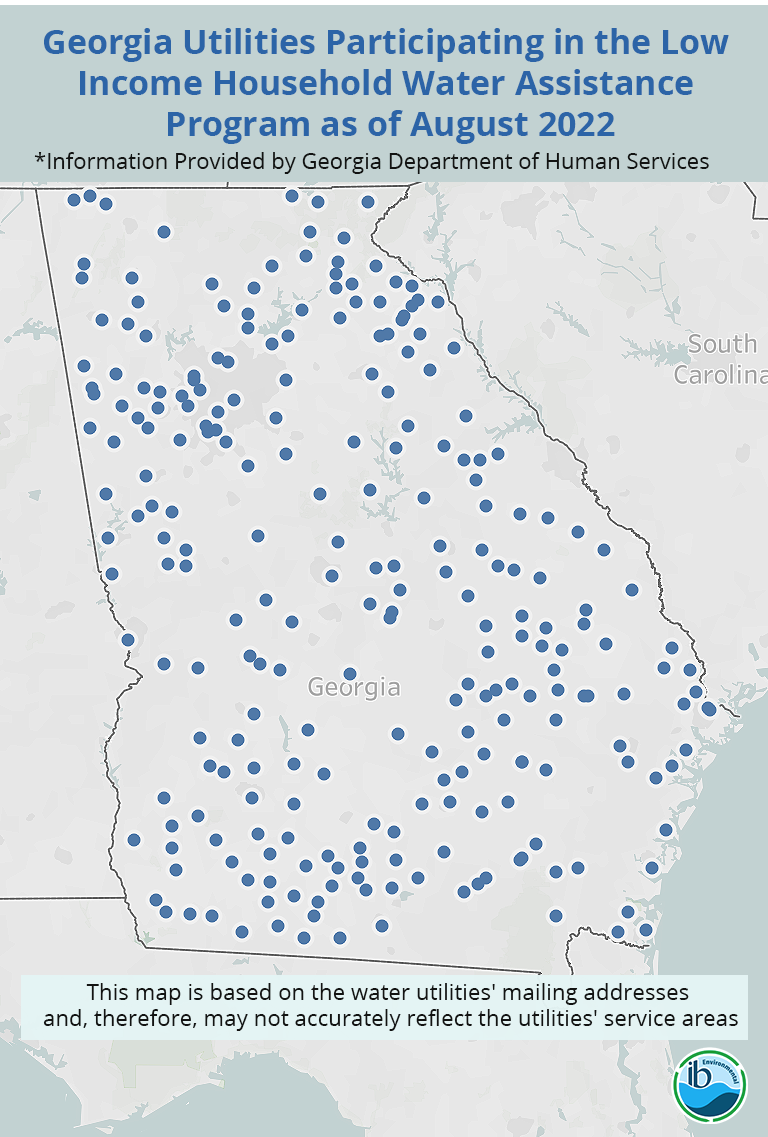Moving from less efficient, fossil-fuel based energy to more efficient renewal sources of energy is a goal of many communities. As communities integrate renewables into their long-term planning, we often see target years such as 2030 and 2050 deadlines set to achieve carbon neutrality goals. But, what are the main elements in reaching these goals, and how are the lowest-income “pockets of poverty” within a community affected by these targets?
Read MoreProviding essential services like energy and water is costly. In the case of water, increasingly so, with increases in water rates outstripping inflation in the last couple of decades. In terms of energy, bills tend to be higher than water bills, and the southeastern US, in particular, has some of the highest energy burdens in the country. Water and energy utilities must contend with aging infrastructure, changes in population, climate and environmental adaptation, cybersecurity measures, and requirements to protect public health and the environment.
A 2023 report estimated an 8% increase in capital and operating costs faced by water and wastewater utilities year-over-year. In the wake of the increasing cost of service, utilities must consider raising rates - driving concerns of water affordability to the forefront (D'Silva et al., 2023; EPA, 2024). So, how do decision-makers know if their utility has an affordability issue?
Owing to both the diversity and magnitude of stormwater infrastructure investments, communities may need to seek funding through sources beyond federal or state programs. Also, since many federal and state programs are in the form of low-interest loans, there is a need to generate funds to repay these loans. Local and regional funding and financing options could come from public agencies and philanthropic groups, as well as local and regional taxes and fees.
Read MoreAs a community concern, stormwater is uniquely positioned at the nexus of environmental and infrastructural challenges. Often competing for limited funds, communities must consider innovative strategies to improve infrastructure and minimize environmental impacts. But what options do communities have to fund stormwater projects? And what does innovation look like?
Read MoreAn inventory to identify the service lines in water systems across the country has a deadline of October 2024, as set by the U.S. EPA’s Lead and Copper Rule Revisions (LCRR). Most water utilities, aside from Transient Non-Community Water Systems, must provide service line inventory information by the October deadline, which will eventually be used in efforts towards a correction to our water infrastructure nationwide: replacing the lead service lines of the past. Water providers now have a directive towards a water-infrastructure future without lead. But, how long has lead been associated with water pipes?
Read MoreThe last few posts showed how a regular homeowner can contribute to energy efficiency and renewable energy at their own home or office. However, another way that “regular” citizens can move the needle forward is by serving with their local government. Meaningful change at the local level is an important way to make an energy impact on your community. Unlike national-level initiatives, these smaller committees can target community specific needs and challenges. Additionally, change at the local level often occurs more rapidly and can be implemented before more formal legislation is enacted. County/city committees offer such a platform for their residents. Dekalb County in Georgia has some unique opportunities for its residents to get involved right now that are explained below. Hopefully this post from one young woman’s experience on her own town’s energy committee convinces you to get involved at your local government.
Read MoreFor many low-income families, utility bills can be a major financial burden. Many households have to decide whether their income will allow them to run a fan, run the air conditioning unit, or neither on a hot day. There are energy efficiency resources that can help a household, but affordability of utility bills remains a significant concern, especially in the southeastern United States. This post will highlight some of the existing assistance programs to address energy bills.
Read MoreThe energy burden in the Southeastern US is higher than in most other parts of the country. There are several reasons for this, including the hot climate, and less investment in energy efficiency compared to the rest of the country.
Energy burden is defined by the U.S. Department of Energy as “the percentage of gross household income spent on energy costs”. Everyone has an energy burden, but the percentage of that burden indicates whether it is low, high, or severe. While there is no universally accepted value or threshold that establishes whether a household faces a high or unaffordable energy burden, the American Council for an Energy-Efficient Economy (ACEEE) indicates that energy burdens below 6% are low, above 6% are high, and above 10% are severe. If you’re curious where you may fall, calculating your energy burden is easy.
Read MoreThe Low-Income Household Water Assistance Program (LIHWAP) emerged as a pivotal but temporary initiative to aid low-income households with their water, wastewater, and stormwater bills. This historic program was the first federal program of its kind to assist with water bills, and was created in the wake of the COVID-19 pandemic. What would its termination now mean?
Read MoreSingle-use items such as plastic water bottles, of which 1.2 million are being used every second, are consistent contributors to pollution and landfills. This statistic was stated in the article “End Plastic Pollution” published by earthday.org. The article also states, “Americans purchase about 50 billion water bottles per year.” While plastic water bottles are necessary in areas that are devoid of safe drinking water sources, reusable water bottles are often the superior water container, not simply for the environment, but also due to their function.
Read MoreServing close to a million residents, Gwinnett County is historically known as one of America’s most diverse and fastest-growing counties. The County constructed its major water and wastewater main lines in the 1970s and since then it has managed to meet its growing demand by continuing to invest in key water and wastewater infrastructure.
Read MorePer- and Polyfluorinated Substances (PFAS) are a group of “forever” chemicals widely used in manufacturing processes such as textile, fabric, carpet manufacturing, and water and heat-resistant coating. Regulating PFAS has been a priority for the EPA. However, the most recent health advisories for certain PFAS chemicals have stimulated much discussion among water utilities, lawyers, scientists, activist groups, and the public in general.
Read MoreAs the first post in this series describes, WaterFirst is a designation and an achievement of local governments for their excellence in water resources management, recognized by the Georgia Environment Finance Authority (GEFA). Based on the prestige of the designation, and the financial benefits that ensue, this post looks at the reasons behind the successes of some WaterFirst designees, and potential hurdles that may limit broader participation in the program.
Read MoreThis is the second in a series of three posts on Newton County’s joint application to WaterFirst. When the Newton County Water and Sewerage Authority applied for WaterFirst designation in 2012, the County was a partner, and so was the county seat of Covington. But there were four other municipalities involved in the joint filling too. This post looks at why the City of Oxford, with a population of only about 2,000, would agree to be involved in this process.
Read MoreDuring the COVID-19 pandemic, the Low-Income Household Water Assistance Program (LIHWAP), a temporary relief program, was created and funded. This was the first time that an assistance program, specifically for water, had been created. Congress appropriated $1.13 billion under the Consolidated Appropriations Act of 2021 and the American Rescue Plan Act of 2021. Georgia received $37,173,132 to launch its LIHWAP program. As of June 30, 2022, 282 water utilities in the state are participating in the program that helps customers with their water bills. Is it too late for your utility to be one of them?
Read MoreWater utilities play an important role in a community by providing an essential service. For years, many water systems have utilized partnerships by collaborating with other nearby utilities to address challenges or take advantage of opportunities. This series of three posts will highlight how a group of communities in Georgia partnered to receive a joint designation to the prestigious WaterFirst Program.
Read MoreWhile intense rainfall events benefit society by making water available for consumption, they can also put water utilities under stress. Extreme weather events like flash floods and storms can lead to the shutdown of water treatment plants. These extreme weather events may become more frequent under our current climate conditions. Therefore, understanding how these events impact water and its grid is critical. It is equally critical to include the water infrastructure sector in talks about strategies to address the climate impacts. This blog presents how the water sector has had limited participation in recent climate change talks and showcases what some water utilities are doing to address pressing climate challenges.
Read MoreTohopekaliga Water Authority (Toho) was established in October 2003 by a special act of the Florida legislature, and is the largest provider of water, wastewater, and reclaimed water services in Osceola County, Fla. As of 2021, Toho currently serves approximately 111,900 water, 105,600 wastewater, and 20,100 reclaimed water customers in Kissimmee, Poinciana, and unincorporated areas of Osceola County.
Read MoreMany non-profits and advocacy groups seek ways to support water utilities with their infrastructure and revenue needs, but understanding how to interact with utilities can be daunting. This post highlights a recent “toolkit” that was designed to show these groups how they can participate in the utility decision-making process. Click to read more.
Read MorePublicly-owned wastewater systems face large infrastructure expenses, and there are several established sources of financing designed for these types of systems. On the other hand, there have traditionally been very limited funding options designed for a homeowner who is not connected to public wastewater. Thousands of Georgia homeowners fit this scenario, where they have private onsite wastewater systems called septic tanks. In the 15-county Metropolitan North Georgia Water Planning District alone, it is estimated that there are more than 450,000 of these septic systems. When these systems need repair or replacement the cost can vary widely but is usually in the range of several thousand dollars, and in some instances, costs can get up to $20,000. This post highlights a few financing programs tailored specifically to septic tank repair, click to read more.
Read More



















